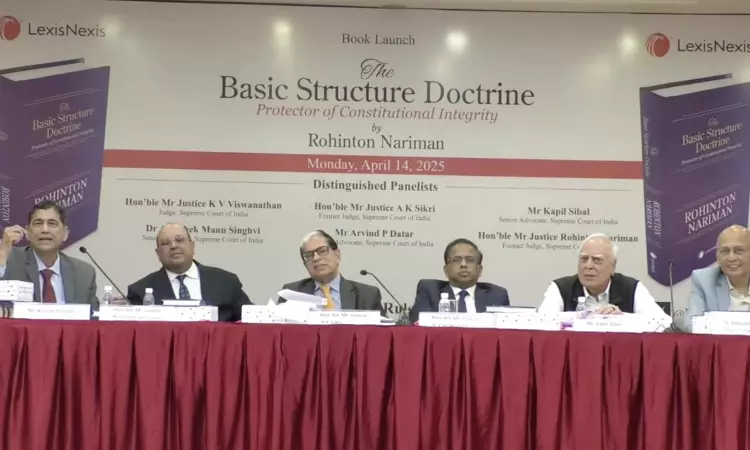Jurists Debate View That Ordinary Laws Can't Be Challenged For Violation Of Basic Structure Of Constitution
Amisha Shrivastava
15 April 2025 10:39 AM IST

Next Story
15 April 2025 10:39 AM IST
At a panel discussion held during the launch of former Supreme Court judge Justice Rohinton Fali Nariman's new book on the Basic Structure Doctrine, Senior Advocates Kapil Sibal, Dr. Abhishek Manu Singhvi, and Arvind Datar raised concerns about the basic structure of the Constitution being violated through ordinary legislation.While the Supreme Court has held that constitutional amendments can...
